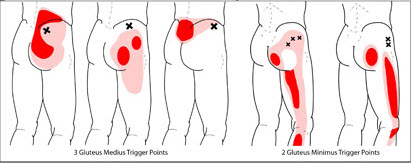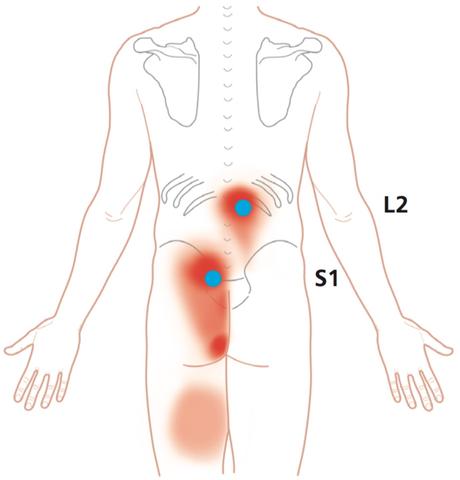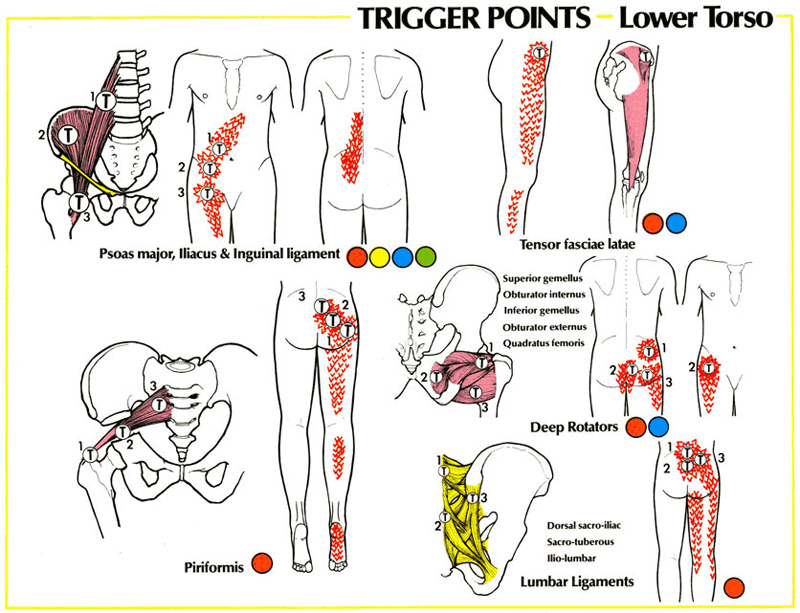So, You have a Hamstring Strain and looking for help. If this is your third, fourth, or Xth time suffering from a hamstring string, you are not the only one.
We wrote an article called “Everything you need to know about your hamstring anatomy, movement, and injury from a Sports Medicine Physical Therapy Specialist” that will help set the foundation for this article.
Let us get straight to a list of reasons that your hamstring strain is not going away, even with stretching, foam rolling, and soft tissue massages.
- You are not adding hamstring strengthening variations that emphasize eccentric-type of movements.
- You need to train in the specific activities that translate to your goals or common trigger activity.
- You are focusing too much on the hamstring muscles and need to help your hamstring muscles to work well with your body.
- No one has thought to ensure your hip, knee, ankle/heel, 1st toe, and lumbar spine joint mobility are healthy and adaptable.
- There is a Sciatic nerve involvement.
- There is a muscle that is mimicking pain to your hamstrings.
- You are not recovering well through inadequate sleep, nutrition, or nutrients.
As you can see that the list is longer than you may have assumed. Do you know what that means?
There is absolutely hope that you can stay active without fearing of a pulled hamstring muscle. You can sprint, run, jump, and do what makes your body feel happy.
Read below and start addressing these reasons and let us know how you feel in a few weeks.
1. You are not adding hamstring strengthening variations that emphasize eccentric-type of movements.
Many people focus on concentric hamstring exercises. Concentric type of movements engages the muscle fibers to shorten and strong. Eccentric type of movements engages the muscle fibers in a lengthened position.
Research has shown that chronic muscle injury happens because the muscle healed in an incomplete and unorganized manner. Eccentric-type of exercises causes micro-tears that will help restart and reorganize your muscle fibers to be parallel with each other.
You are assuming that you might have more pain and soreness if you are trying to cause micro-tears in the muscle fibers. You are correct. So, how do you know when it is therapeutic versus harmful?
We tell our clients that if your soreness and pain is happening during the exercise but gone at the moment of rest, you are fine. The obvious scenario where the exercise is safe is when there is no soreness during and afterward.
If you have pain or soreness seconds or 1-2 minutes after stopping the exercise, the safest is to go cautiously. We label this to a yellow-traffic light system. The soreness should be less than a 4/10 pain scale intensity. We recommend you adjust your rest time to be longer, decrease your repetitions, or range of motion within the exercise. If you are not getting that quality workout due to your mind being on the soreness or hamstring pain, try the exercise again in a week.
You stop when the exercise causes more than 4/10 pain scale intensity or lingers and causes discomfort throughout your session. You are not ready for another 2 weeks. Try again and re-test.
As we mentioned, the hamstring muscles consist of more fast-twitch fiber types. They fatigue faster so you can to train the hamstring muscles to be explosive.
Although the hamstring muscles are not designed to handle prolong workload, this brings an introduction to the idea that the spine and pelvis stabilizers are crucial to have efficient and healthy Hamstring muscles all year round.
We will elaborate on this idea later, but as a sneak-preview, we suggest you improve on diaphragmatic, lower abdominal complex, gluteal muscle complex, and pelvic floor muscle recruitment and strength. If you have been following us, coordination and reflexive control are more important that amplifying your isolated muscle strength.
TIP: Add Nordic hamstring, Single leg deadlift, and bridge hamstring pulls.
2. You need to train in the specific activities that translate to your goals or common trigger activity.
There are numerous studies that have shown a runner training does not make you a better cyclist. A cyclist training program does not help you to swim better. You will gain athletism as your body has a more diverse movement pattern, but you have to train specifically to your needs.
As you can assume, hamstring intensity and the timing of when the hamstring muscles are used are different based on what your goals are. Each movement and tasks require a different ratio of concentric, isometric, and eccentric load onto the hamstring muscles.
You can feel the stretching tension of an eccentric load between a Romanian and an American Deadlift.
A sprinter will need to train the eccentric load of slowing down an outstretched leg under greater range of motion than a swimmer will need.
A swimmer needs to emphasize a shorter range but for a longer duration. You will need to emphasize spinal core stabilization as the primary mover so the hamstring does not fatigue.
You need to more specific in training your hamstring muscles as a bilateral or unilateral exercise.
TIP: Your hamstring exercises should look close to the activity you want to achieve.
3. You are focusing too much on the hamstring muscles and need to help your hamstring muscles to work well with your body.
There are numerous research that are showing the importance of training the region neighboring the site of the problem to bring lasting results.
As the hamstring muscles are connected to the pelvis, hip, and knee, you have to incorporate ankle/feet and lumbar spine to this equation of hamstring strain rehabilitation.
We emphasize these muscles specifically. You need strengthening, control, and coordination synchronicity with the hamstring muscles.
- Gluteal muscle (Gluteal Maximus, Gluteal Medius, and Gluteal Minimus muscle)
- Anterior and posterior pelvic floor stabilizers
- Deep hip muscles (Superior and Inferior Gamelius, Obturator Internus and Externus, Quadratus Femoris muscle)
- Calves muscle complex (Soleus and Gastrocnemius muscles)
- Ankle/arch stabilizer (Peroneal Longus and Posterior Tibialis muscle)
As you perform a complex stride pattern when walking, running, or something similar, you need to have an engagement of your Gluteal muscles first, Hamstring muscles second, and your opposite side paraspinals (lower back) muscles.
The movement pattern in the explosive athletic situation is called triple extension. You should feel your calves and arch muscles engage simultaneously with your gluteals.
If we reach further beyond the lower spine, you need to incorporate opposite arm swing. Your opposite arm should swing back as your stride leg trails back.
3. No one has thought to ensure your hip, knee, ankle/heel, 1st toe, and lumbar spine joint mobility are healthy and adaptable.
As we elaborated on the idea that you have to train the muscles that enhance the functionality of the hamstring muscles, you have to wonder about what makes a muscle healthy to be able to train hard.
There are two components to a healthy muscle. Pain is one of them. The idea of using pain can be complex and not reliable, and hence we will leave that for another article.
A criterion that a muscle needs to demonstrate for a standard level of health is mobility. The underlying joint that the muscle supports and wraps around or connects to needs to be mobile and have a full range of motion.
The saying is you need a full motion in order to have maximal strength capacity.
There is one joint or region that we did not highlight in last factor. That joint is your first toe, specifically extension. When you walk, you roll off your big toe. If you do not do this, you will not have adequate stability to your ankle.
Why? The Posterior Tibialis muscle wraps around to connect to your big toe. Your Posterior Tibialis muscle supports your inner ankle and arch. The Tibialis Anterior connects from your front shin and connects to your big toe. They stabilize your front ankle. Your Fibularis Longus starts from your Fibula and Tibia, or your outer ankle region, to connect to your big toe. They stabilize your outer ankle.
Lastly, your calves complex indirectly attaches to your Achilles tendon, which has fascia slips that support your arch. When you roll off of your first toe, you activate this fascia support of your calves.
If you lack dorsiflexion of your big first ray, you get a smaller stabilization effect.
How about this, we put your first ray joint as the top 5 joints that can impact your whole body when it becomes stiff.
4. There could be underlying Sciatic nerve involvement.
If you have read our first article of this Hamstring series, you will see that the sciatic nerve is sandwiched between the hamstring muscles.
If a nerve is involved at one junction, the whole nerve can be dysfunctional. What we will explain will help you to understand this sciatic nerve factor and the following mimicking pain factor.
Nerves help us to feel and move. The feeling aspect is called sensory input and output. This is where things get tricky for someone who does not have a medical background in Orthopedic and Sports Medicine training.
Early nerve dysfunction cannot talk for themselves, so nerves communicate through the muscles that it innervates. The sensation feels like deep and achy muscle pain or non-painful/tight muscle only presentation. Late nerve dysfunction is expressed through feelings of tingling, numbness, and intense burning.
There is a specific test that we do to help tease out between a nerve entrapment, hamstring strain, or both. The goal of these tests is to reproduce your exact feeling of pain (the hamstring strain) but through a move far away from the hamstring muscles.
If we can take away your hamstring strain feeling by moving your neck, then it is not a hamstring strain. Your hamstring muscles do not help you to move your neck.
The first Orthopedic test is called the Straight leg test with sciatic nerve bias, tibial nerve bias, and fibular nerve bias.
The steps include having someone support your leg as you lay on your back. You are looking to bring a sensation of your hamstring strain and pain sensation. As you are laying on the table, you should have no pain as your hamstring muscles are not being used.
Raise your head up and look at your navel. Use your hands to support your head and neck.
SCIATIC NERVE BIAS
Have your friend or family SLOWLY raise your leg up so it will be 90 degrees to the table. Go slowly and STOP at any moment of feeling your hamstring strain. The position where you stop is crucial to where you JUST feel your pain.
When or if this leg raise brings on your hamstring strain feeling, slowly bring your head down. If that impacts your hamstring strain, then this is a POSITIVE response, and you should seek a medical professional to address the sciatic nerve directly.
If bringing your head down does nothing, then raise your head up again. Have your friend bring your leg inwards where it is crossing your midline. If this brings on your hamstring strain feeling, lower your head. Follow the same thought process as before.
If crossing your leg is not doing anything, have your friend rotate your leg inwards like you are turning your foot in. Follow the same thought logic.
The next sequence is to bend your trunk sideways to 45 degrees. Follow the same neck or hip crossing sequence to decipher if you have sciatic nerve involvement.
A true NEGATIVE test is where your head movement and hip movements do not alter your hamstring strain sensation. As you may be thinking that testing your sciatic nerve involvement is harder to express in writing. You might need to reach out to an Orthopedic Physical Therapist Specialist.
To emphasize the tibial nerve, you dorsiflex (bring your toes towards your shin) your ankle before your family or friend raise your leg.
To emphasize the fibular nerve if you believe you have a Short head Bicep Femoris muscle strain,
5. There is a muscle that is mimicking pain to your hamstrings.
Not all pain that we feel is sourced at the same place of the pain location. As we talked about nerves having impact on how we feel through sensory nerve fibers, the reason for many structures to have the same feeling as a hamstring muscle is due to embryological development.
The reason for many to feel arm and jaw pain and numbness during a myocardial infarction or heart attack is because both cardiac tissues and arm muscles come from the same embryological source.
Anyways, trigger points can be used to help you understand how other muscles can mimick pain in the same area as your hamstring muscles.
As you can see in the picture, these muscles have shaded areas that indicate the location of referred pain. Referred pain is pain that shows up when you press the trigger point, as shown by the “X” mark.



6. You are not recovering well through inadequate sleep, nutrition, or nutrients.
As we have been in the business of being a Sports Medicine and Orthopedic Physical Therapist since 2004, we realize that exercise does not fix everything. If you walking or running around like a zombie and sleep deprived, your nervous system has no chance at working to the same speed as your body.
If you have no fuel or clean fuel in your tank, will power and exercise alone cannot fix a recurrent hamstring strain. Nutrient deficiency and poor gut health is a common reason that many cannot make any substantial stride in progressing to the next level. They are plagued with injuries.
The professional athletes appear like they can overcome hamstring strains, but in reality, they cannot. They are relying on remote memory and high-level technical skills to get by.
As a trained Functional Medicine practitioner, we cannot emphasize digestive health and metabolic regulation enough. We have written a few articles on digestive health and its role in helping you to recover faster from muscular and joint pain.
Lastly, your ability to remove inflammatory and lymphatic waste products is highly undermanaged in chronic hamstring strains. You can only heal as well as your ability to remove waste.
Imagine if your neighborhood street trash collector stopped taking the trash every week. You can try your best to be mindful of conserving the number of things you use, but trash will end up collecting and building up.
Your neighborhood street will become stinky very fast. In this modern and fast-paced society, we find many have a hard time staying with a balanced lifestyle of proper nutrition, sleep, and mental hygiene. The tendency is to push, exercise, and rehabilitate with stretches more and more if the current prescription is not effective. More. Push. Stretch. More. Push. Stretch.
Your hamstrings muscles need fuel and can only function based on what the nervous system can handle. If you have low energy and brain fog, your muscles will work at a different speed to your brain.
As you finish reading this article, take the time to physically prepare your body holistically. Modify small parts of your day to bring a healthier lifestyle so your body can recover completely. Do not forget that muscles need a healthy nervous system to move. No nerves, no movement.
If you need assistance or professional care from us and live in the neighborhood of Long Beach or Los Angeles, California, click on the button below to set up your complimentary consultation with Dr Danh Ngo.
One LOVE,
Dr Danh Ngo
Spine and Sports Medicine Specialist
Doctor of Physical Therapy

